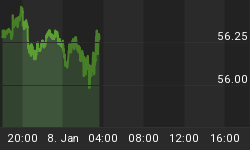Article originally submitted to subscribers on 22nd February 2007...
It's a great paradox!
An inverted yield curve is normally a sign of an impending recession.
Or is it?
The yield curve has been inverted since July 2006 and so far NO sign of anything resembling a recession.
Yes, we are seeing an economic slowdown. Yes, housing looks week and the housing stocks look as if they could be entering a new downleg.
But the Stock Market isn't worried. No, the stock market is marching higher day after day after day.
And M&A activity? It's OFF the CHARTS
Traditionally an inverted yield curve is a sign that monetary conditions are too tight. Fed interest rate rises cause yields on the short end to rise higher than the long end. The inversion is exacerbated as long-term bond yields fall because inflationary pressures subside.
So what gives? Why no looming recession?
The answer lies in the global nature of markets. Taken from a global view, the worlds yield curve is not inverted. That is, if you take the lowest yielding short term notes (Japan) and the highest yielding long-term note (New Zealand or Australia) within the developed markets we see a normal shaped yield curve. But such analysis ignores the effects of currency risk.
In late December I wrote a piece called Merger Mania in which I explained that the 2 major sources of funding driving the markets higher was Bond issuance at 10-year US rates and the Yen carry trade.
The 10-yr US rate is the prime ingredient in mortgage paper and increasingly M&A paper. Private equity deals are done by issuing debt (to finance acquisitions) on the target companies Balance Sheet and claiming an interest tax deduction which increases the return on investment.
As noted in the above article, the yields on 10-Yr treasury notes have bounced off strong support and the trend is towards higher interest rates. Here's an update of the chart:

Figure 1 - 10Yr Yields moving higher
Rising rates will put pressure on the mountain of debt paper pegged to 10-yr money.
That's been ok, up until now, because the Bank of Japan has been willing to step in and help by lending at near zero interest rates. But as mentioned above, currency risk becomes a problem when borrowing in Yen and investing the US Dollar or Aussie Dollar assets. Here's an update of the monthly chart I showed in Merger Mania:

Figure 2 - Yen Monthly (above); Yen Weekly (below)
For a while it looked as if the Japanese Yen was breaking down out of the triangle formation (above monthly chart). This would have portended a much lower Yen and a continuation of the Yen carry trade for some time. However, the smaller weekly chart shows that probabilities now favor the Yen making a significant low in February and moving higher from here. It remains to be seen, but I think the Yen will move progressively higher from here and place an inordinate amount of stress on the Yen carry trade.
Liquidity is a fickle character and can disappear as quickly as it shows up. A continuation of the above 2 trends will almost certainly curtail liquidity to the market.
For us Gold traders, we should bear in mind that Gold is fundamentally insurance against default risk. Insurance against the default of all paper assets. Therefore, a good indicator of risk and of when Gold will head higher in a material way is the perceived risk of Investment Grade Bonds vs. Safer Government paper.

Figure 3 - Credit Spreads no sign of contracting yet
As of yet there are no signs of an impending reversal in credit spreads although we are getting close to overhead resistance.
Markets move at Glacier pace for a long time, testing the patience of investors and speculators. But when the above liquidity squeeze finally happens, and credit spreads reverse, the volatility associated with downside action will be ENORMOUS and Gold will be a major Beneficiary from a FLIGHT TO SAFETY.
It will come!
More commentary and stock picks follow for subscribers...
















